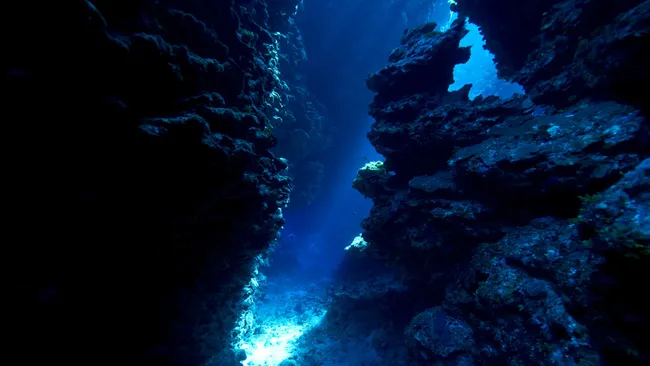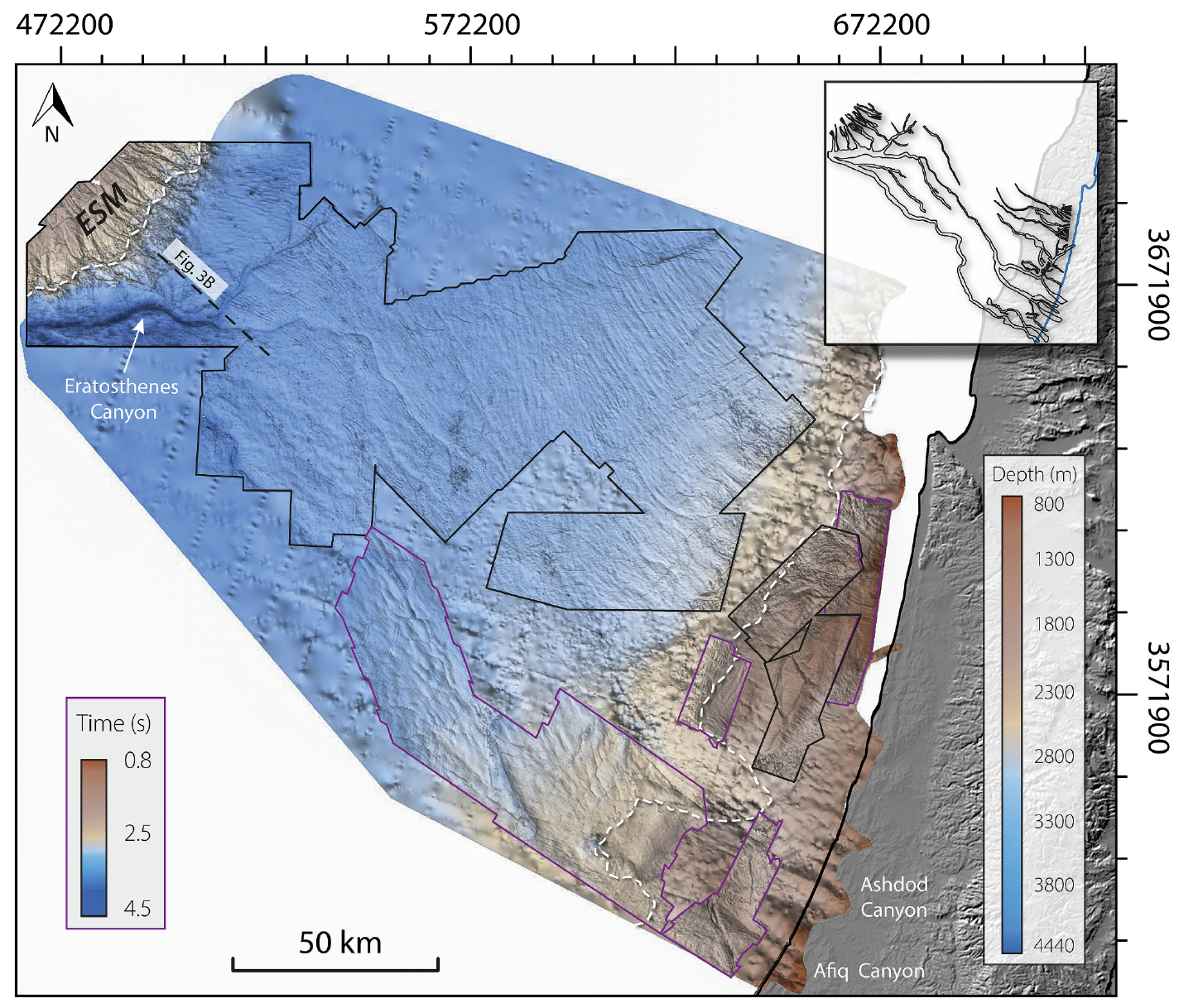A newly discovered underwater canyon was carved out of the seabed by
extremely salty currents. (Image credit: Jason Edwards via Getty Images)
From LiveScience by Sascha Pare
Researchers have discovered a 33,000-foot-wide (10 kilometers) underwater canyon that was carved out of the Mediterranean seabed shortly before the sea dried up around 6 million years ago.
Scientists have discovered a giant underwater canyon in the eastern Mediterranean Sea that likely formed just before the sea transformed to a mile-high salt field.
The canyon formed around 6 million years ago, at the onset of the Messinian salinity crisis (MSC), when the Gibraltar gateway between the Atlantic Ocean and Mediterranean Sea narrowed and eventually pinched shut due to shifts in tectonic plates.
The Mediterranean Sea became isolated from the world's oceans and dried up for roughly 700,000 years, leaving behind a vast expanse of salt up to 2 miles (3 kilometers) thick in some places.
As sea levels dropped, increasingly salty currents eroded the seabed and incised gullies several hundred feet deep along the steepest edges of the Mediterranean Sea.
As sea levels dropped, increasingly salty currents eroded the seabed and incised gullies several hundred feet deep along the steepest edges of the Mediterranean Sea.
In a study published in the January issue of the journal Global and Planetary Change, researchers now describe a giant U-shaped canyon located 75 miles (120 km) south of Cyprus, in the depths of the Mediterranean's Levant Basin.
The 1,640-foot-deep (500 meters) and 33,000-foot-wide (10 km) canyon, which the researchers named after the nearby Eratosthenes seamount, likely formed underwater shortly before salt piled onto the seabed.
The 1,640-foot-deep (500 meters) and 33,000-foot-wide (10 km) canyon, which the researchers named after the nearby Eratosthenes seamount, likely formed underwater shortly before salt piled onto the seabed.
Unlike the more coastal gullies, the canyon had no older "pre-salt" roots, according to the study."
To explain the submarine formation of the Eratosthenes Canyon, we suggest incision by dense gravity currents scratching and carving the deep-water seafloor," the researchers wrote in the study.
The newly discovered Eratosthenes Canyon sits close to the Eratosthenes seamount in the eastern Mediterranean sea.
(Image credit: Geological Survey of Israel)
STRM bathymetry off of the Levant Basin with the GeoGarage platform
Weighed down with salt and sediment, these currents rushed along faster than the surrounding water and gradually scooped out enough of the seabed to form the colossal canyon.
Precisely when this occurred remains unclear, but it likely coincided with the beginning of the MSC — between 5.6 million and 6 million years ago, according to the study.
The incision process may have lasted anywhere from tens of thousands to half a million years.
The discovery sheds light on a decades-long debate over whether Messinian gullies and canyons that now lie underwater formed above or below the sea surface.
The discovery sheds light on a decades-long debate over whether Messinian gullies and canyons that now lie underwater formed above or below the sea surface.
"This new evidence strengthens the arguments that at least part of the erosion across continental margins occurred [below water]," the researchers wrote.
The newly discovered canyon sits within a wider network of canyons and channels in an area known as the Levant Basin, which extends from the coast of Syria in the north to Gaza in the south, and northwest toward Cyprus.
To the northwest of the canyon, beyond the Eratosthenes seamount, sits the much deeper and older Herodotus basin, which receives currents loaded with sediment from the southeast.
The newly discovered canyon sits within a wider network of canyons and channels in an area known as the Levant Basin, which extends from the coast of Syria in the north to Gaza in the south, and northwest toward Cyprus.
To the northwest of the canyon, beyond the Eratosthenes seamount, sits the much deeper and older Herodotus basin, which receives currents loaded with sediment from the southeast.
These currents may have crossed the area that now boasts the Eratosthenes Canyon long before it was incised, according to the study.
"The absence of older roots under the Eratosthenes Canyon does not rule out the possibility that a shallow pre-MSC channel system predated the Eratosthenes Canyon," the researchers wrote.
"The absence of older roots under the Eratosthenes Canyon does not rule out the possibility that a shallow pre-MSC channel system predated the Eratosthenes Canyon," the researchers wrote.
Links :
- GeoExPro : No walkover but no walking away, The Eratosthenes Seamount (ESM) to the south of Cyprus is still in the exploration game thanks to SAR oil seeps
- ScienceDirect : Deep-water archaeological discoveries on Eratosthenes Seamount
- LiveSciences : —Supervolcano 'megabeds' discovered at bottom of sea point to catastrophic events in Europe every 10,000 to 15,000 years / Underwater Santorini volcano eruption 520,000 years ago was 15 times bigger than record-breaking Tonga eruption / Never-before-seen volcanic magma chamber discovered deep under Mediterranean, near Santorini / 6 million-year-old 'fossil groundwater pool' discovered deep beneath Sicilian mountains




No comments:
Post a Comment